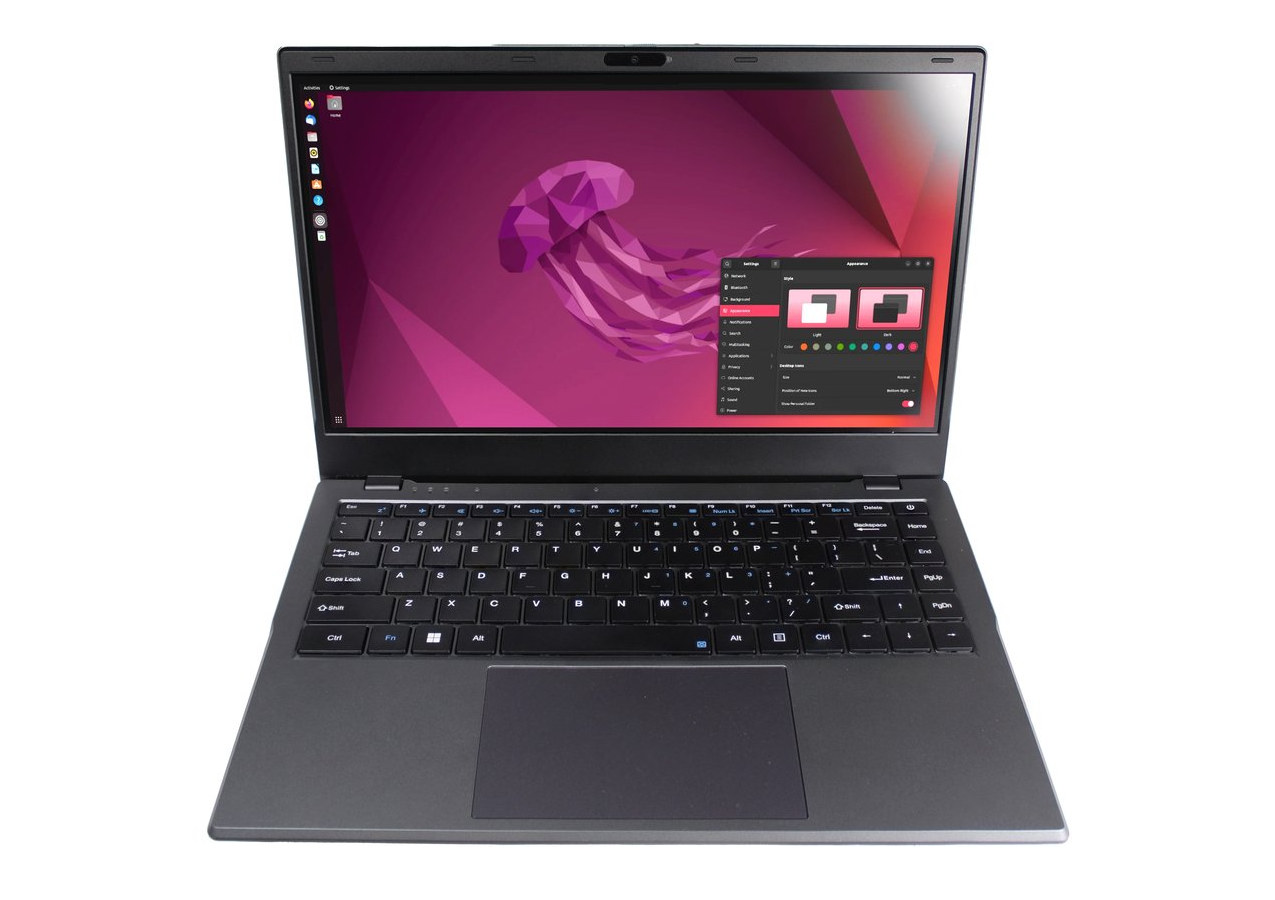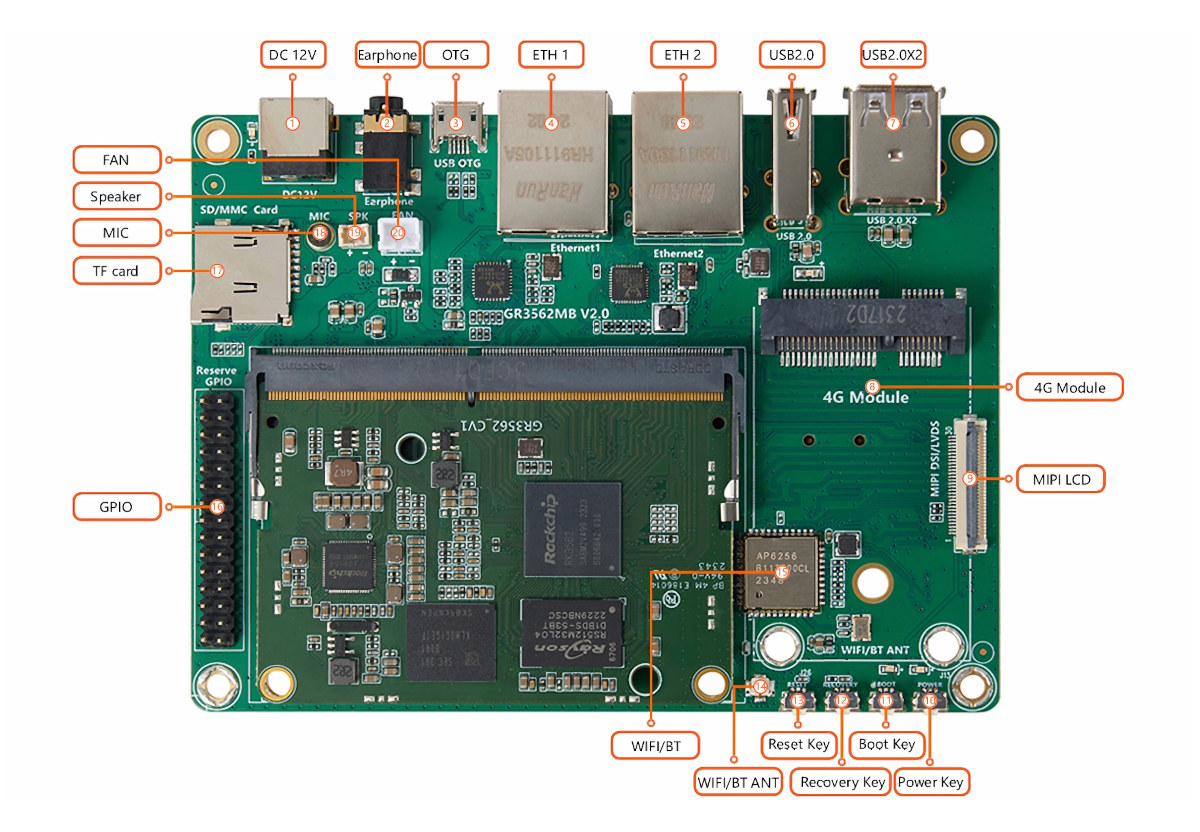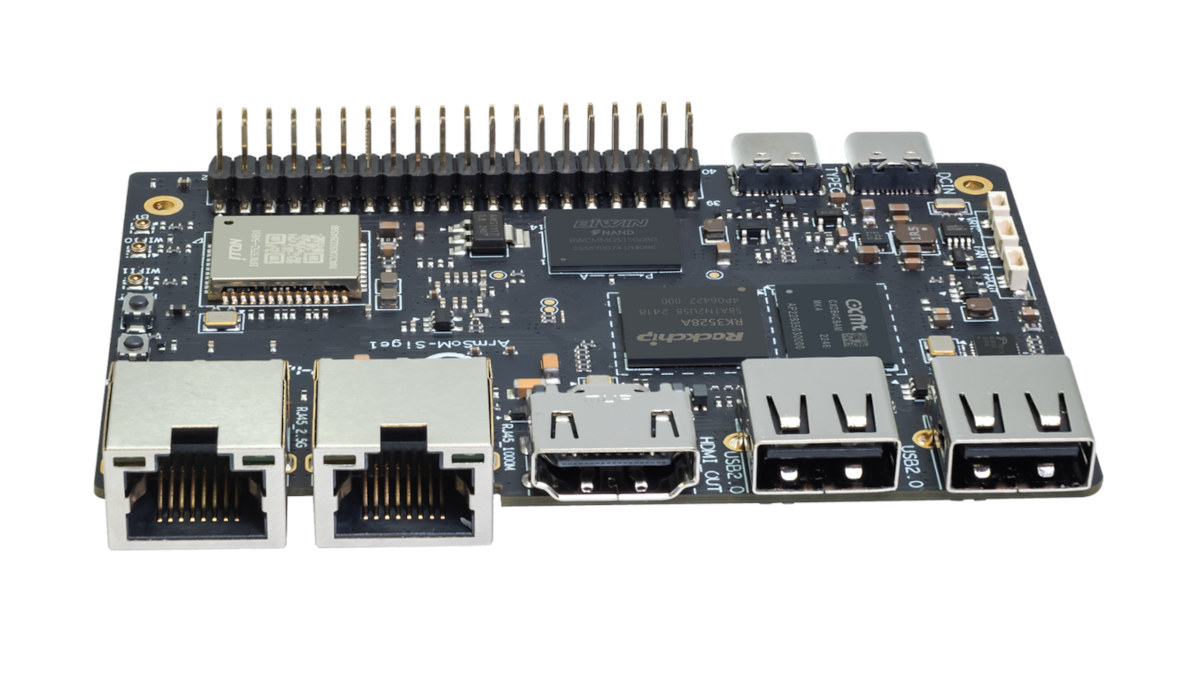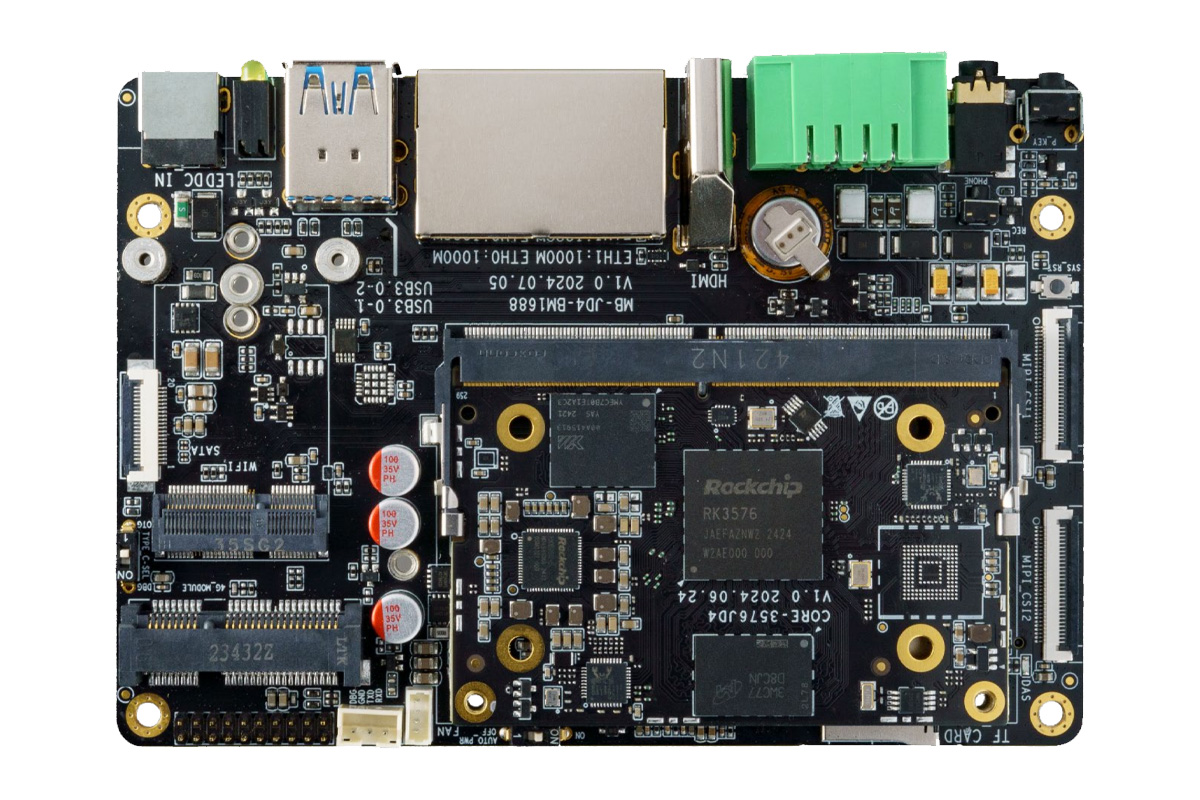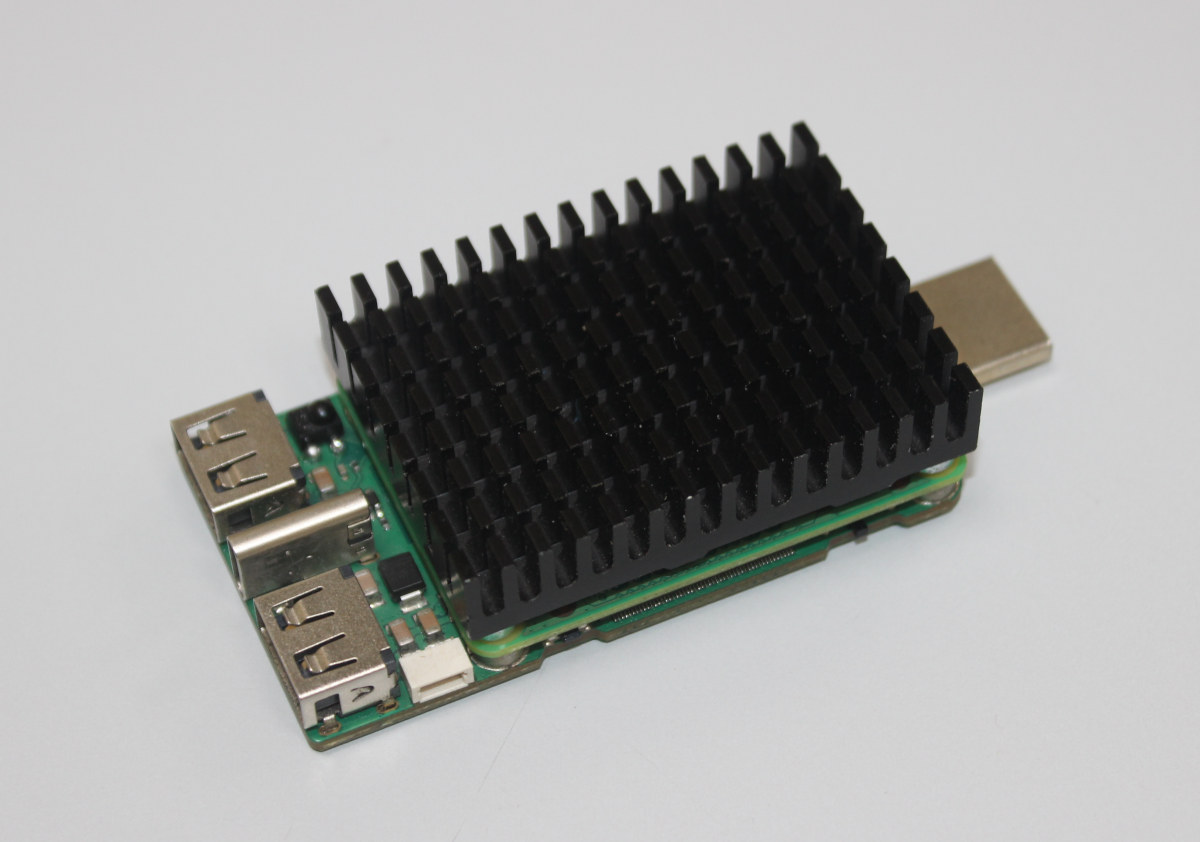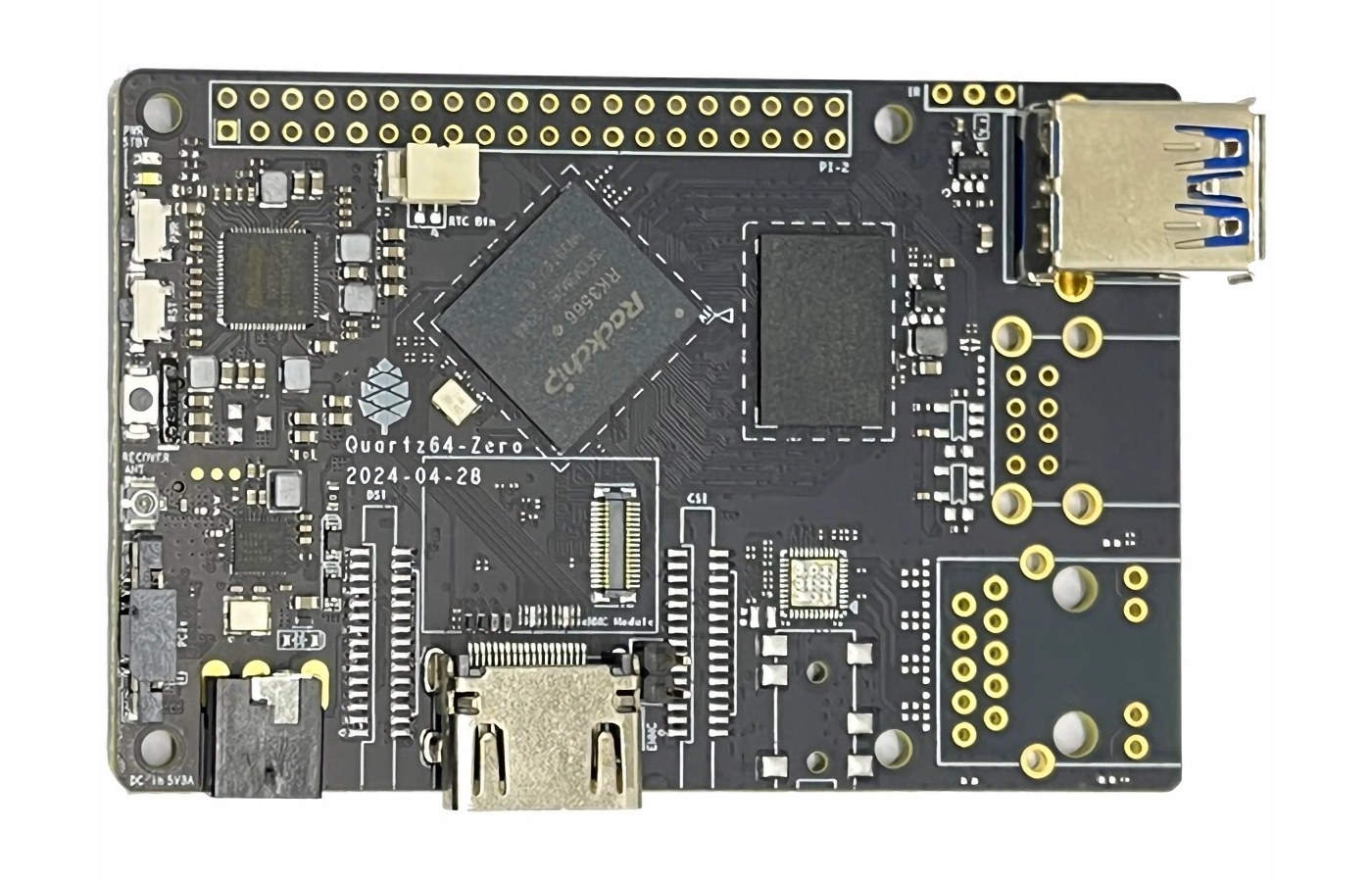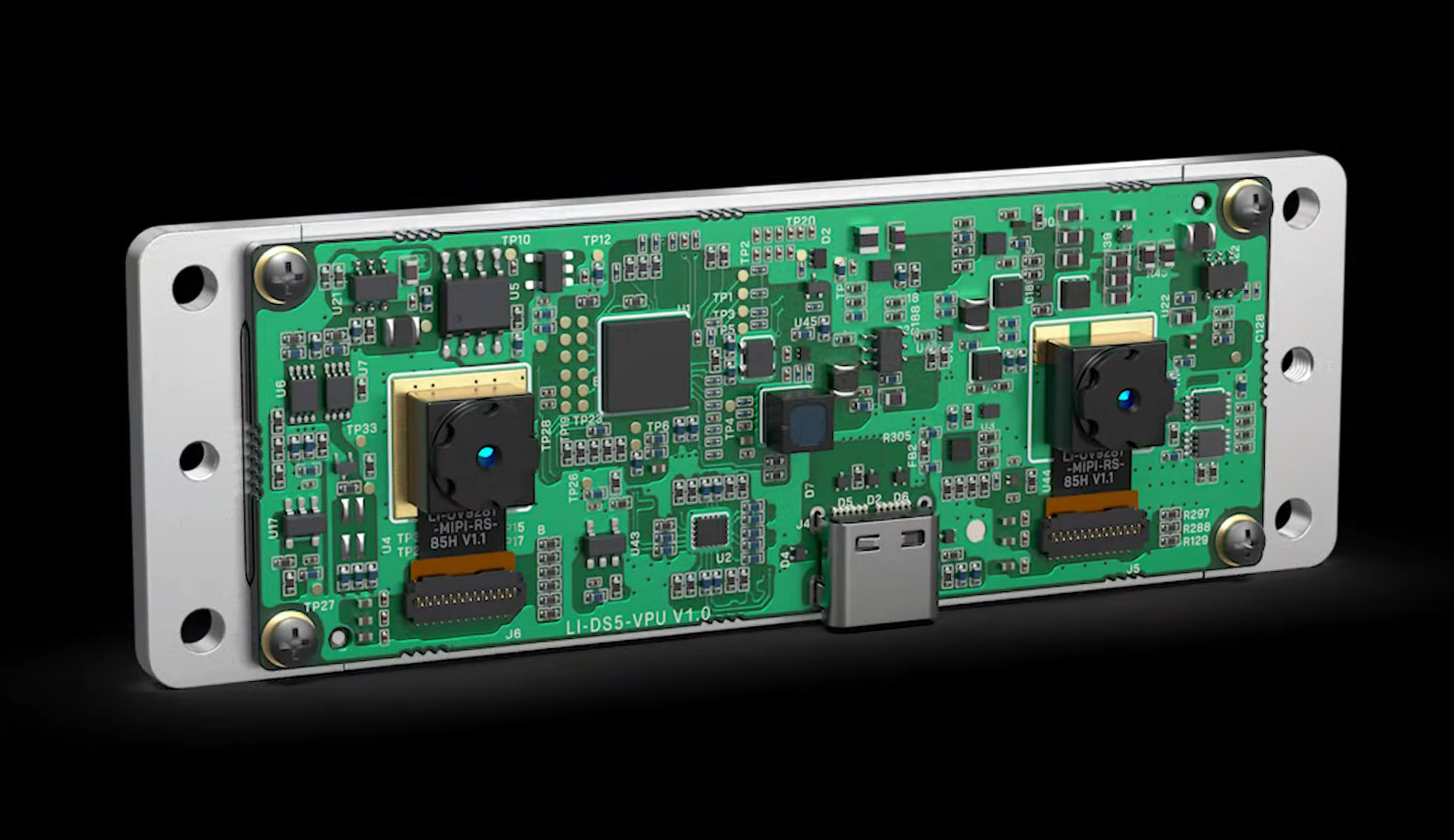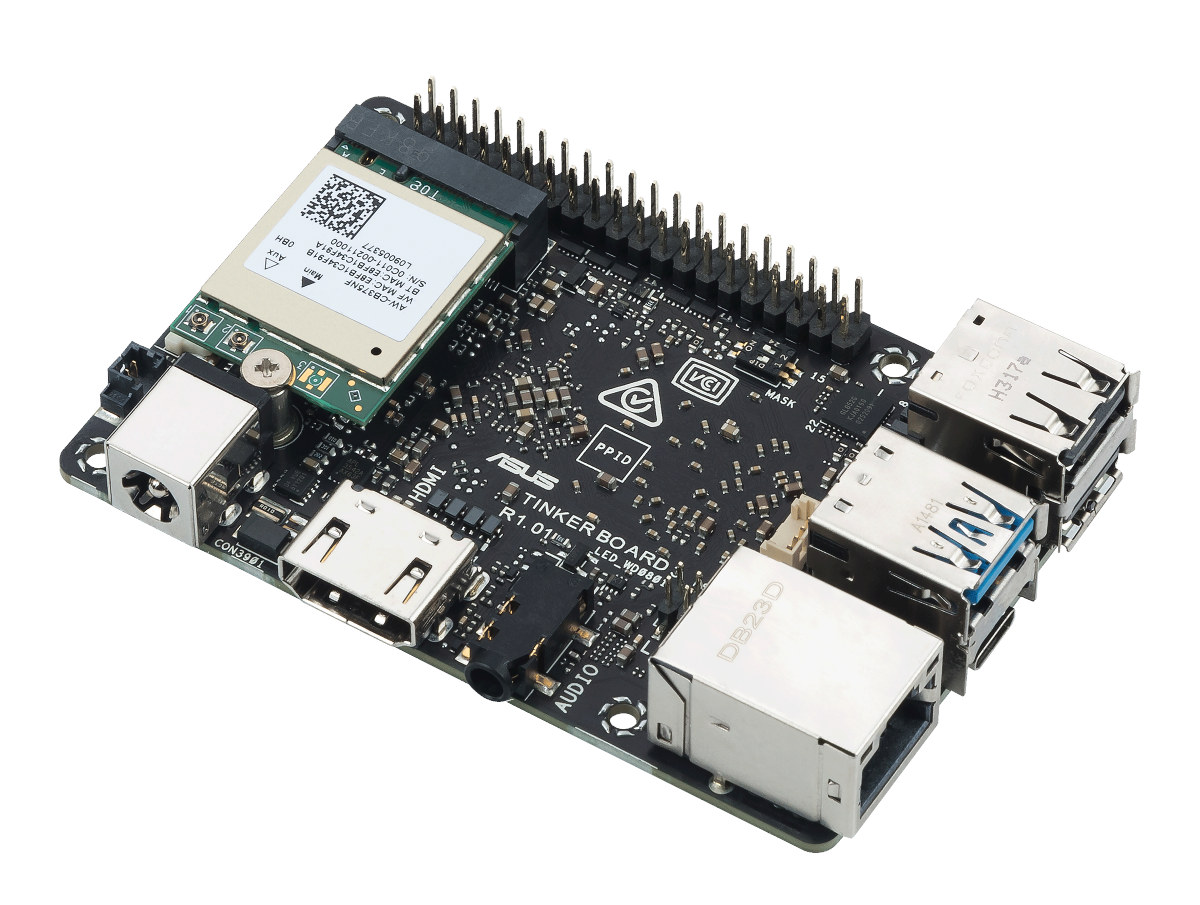GenBook RK3588 is a modular Linux (and Android) laptop powered by a Rockchip RK3588 Arm system-on-module (SoM), and easily serviceable by the user who can add M.2 MVMe SSD storage, switch wireless module, and eventually update to a more powerful SoM, or even change the display. It looks very similar to the Cool Pi Arm Linux laptop, and it’s indeed made by the same company, but a representative told CNX Software that the GenBook RK3588 was an upgrade of the Cool Pi without further details. So let’s have a closer look. GenBook RK3588 laptop specifications: System-on-Module – GenM5 (same as Cool Pi CM5 except for the move from LPDDR4/4X to LPDDR5) SoC – Rockchip RK3588 octa-core processor with 4x CortexA76 cores, 4x CortexA55 cores Arm Mali-G610 MP4 GPU Video decoder – 8Kp60 H.265, VP9, AVS2, 8Kp30 H.264 AVC/MVC, 4Kp60 AV1, 1080p60 MPEG-2/-1, VC-1, VP8 Video encoder – 8Kp30 H.265/H.264 video […]
Graperain G3562 – A Rockchip RK3562 system-on-module and development board
Graperain G3562 is a Rockchip RK3562 quad-core Cortex-A53 system-on-module (SoM) with up to 8GB LPDDR4, up to 128GB eMMC flash suitable for Edge AI, IoT, automation, and consumer electronic applications. The company also provides the G3562 development board for the SoM with an M.2 socket for NVMe SSD, dual Ethernet, WiFi 5 and Bluetooth 5.0, and optional 4G LTE/3G cellular connectivity, plus a MIPI DSI/LVDS display connector, two MIPI CSI camera connectors, three USB 2.0 ports, audio interfaces, and expansion through a 30-pin GPIO header and UART connector. Graperain G3562 SoM GrapeRain G3562 specifications: SoC – Rockchip RK3562 CPU – Quad-core Arm Cortex-A53 quad-core @ 2.0 GHz GPU – Mali-G52-2EE with support for OpenGL ES 1.1/2.0/3.2, OpenCL 2.0, Vulkan 1.0/1.1 AI accelerator – 1 TOPS (INT8) NPU VPU Encoder – H.264 1920×1080 @ 60fps Decoder – H.265/VP9 4096×2304 @ 30fps; H.264 1920×1080 @ 60fps RAM – 2GB LPDDR4 by default […]
Banana Pi BPI-M1S RK3528 SBC features HDMI 2.0, 2.5GbE, WiFi 6, and more
The Banana Pi BPI-M1S, also known as the ArmSoM-Sige1, is a low-profile single board computer (SBC) based on the Rockchip RK3528 quad-core Cortex-A53 SoC initially designed for entry-level 4K TV boxes. Contrary to the two other RK3528(A) SBCs we’ve covered, namely the Radxa Rock E20C and FriendlyELEC NanoPi Zero2 focusing on low-cost and small footprint for headless networked applications, the Banana Pi BPI-M1S integrates more features such as HDMI 2.0 for 4K video output and audio, 2.5GbE and WiFi 6 networking, and a 40-pin GPIO header for expansion. Banana Pi BPI-M1S specifications: SoC – Rockchip RK3528 CPU – Quad-core Arm Cortex-A53 @ 2.0 GHz GPU – Arm Mali-G450 GPU with support for OpenGL ES1.1, ES2.0, and OpenVG 1.1 APIs VPU H.264, H.265, and AVS2 decoder up to 4Kp60 H.264 and H.265 encoder up to 1080p60 Memory – 4GB LPDDR4x Storage 32GB eMMC flash (by default) MicroSD card slot Video Output – […]
Firefly introduces Rockchip RK3576 SoM and All-in-One carrier board compatible with NVIDIA Jetson Orin Nano and Orin NX modules
Firefly has released a Rockchip RK3576 SoM and development board called the Core-3576JD4 Core Board with a SO-DIMM edge connector and the AIO-3576JD4 carrier board respectively. The core board or the SoM is built around an octa-core 64-bit processor with a Mali G52 MC3 GPU and a 6 TOPS NPU, so it can handle demanding AI tasks while maintaining low power consumption. The AIO-3576JD4 is a full-fledged carrier board with a wide range of on-board interfaces, like dual Gigabit Ethernet ports, MIPI-CSI, HDMI 2.1, USB 3.0, USB 2.0, USB Type-C, a Phoenix connector for serial, dual-row pin headers (SPI, I2C, Line in, and Line out), an M.2 socket for 5G, a mini PCIe for 4G LTE, an M.2 socket for WiFi 6/BT 5.2, and a third M.2 socket for SATA/PCIe NVMe SSD expansion. RK3576 AI SoM and dev board specification Core-3576JD4 specifications SoC – Rockchip RK3576 CPU – Octa-core CPU […]
DigiPort is an HDMI computer dongle powered by a Raspberry Pi CM4 (Crowdfunding)
Shivam Goyal, going under the Geeky Tronics name, has developed the DigiPort HDMI computer dongle powered by a Raspberry Pi CM4 system-on-module and designed to be connected directly to the back of an HDMI or through an HDMI cable. Since it does not support MHL, the DigiPort also needs a USB-C power source. You can add a keyboard and a mouse through its two USB 2.0 ports or via Bluetooth and network connectivity is managed through WiFi 5 making it a portable computer ready to use out of the box. DigiPort specifications: Supported System-on-Module – Raspberry Pi CM4 SoC – Broadcom BCM2711 quad-core Cortex-A72 processor @ 1.5 GHz System Memory – 1GB to 8GB LPDDR4-3200 SDRAM Storage – 0GB (CM4 Lite), or 8GB to 32GB eMMC flash Wireless – Dual-band WiFi 5 and Bluetooth 5.0 Storage – MicroSD card for OS when using a CM4 Lite module Video Output – […]
Quartz64 Zero – A customizable, cost-optimized Rockchip RK3566T SBC with Raspberry Pi PCIe connector
The Quartz64 Zero is a thinner, cheaper version of the Quartz64 Model B with a Rockchip RK3566T quad-core Cortex-A55 SoC clocked at 1.6 GHz, 1GB LPDDR4, and HDMI and USB ports. The Quartz64 Zero has almost the same design as the Quartz64 with footprints for optional components (more on that later). Two noticeable differences are the presence of the 20-pin PCIe connector compatible with the one found on the Raspberry Pi 5 instead of a mini PCIe socket, and WiFi 6 and Bluetooth 5.4 support instead of just WiFi 5/Bluetooth 5.0. Quartz64 Zero specifications (changes highlighted in bold and strikethrough when items have been removed): SoC – Rockchip RK3566T CPU – Quad-core Cortex-A55 processor up to 1.6 GHz GPU – Arm Mali-G52 GPU supporting OpenGL ES 1.1/2.0/3.2, OpenCL 2.0, Vulkan 1.1 NPU – 0.8 TOPS NPU for AI acceleration (Unclear whether it’s present, not listed in the specs) System Memory […]
Intel RealSense Depth Module D421 offers a low-cost depth-sensing solution at just $80
Intel RealSense Depth Module D421 is an entry-level stereo depth module with a 0.2 to 3-meter recommended range, a global shutter to capture motion without artifacts, and a 75° × 50° field of view (FoV). Intel has made RealSense Depth cameras for years, including the popular RealSense D435i with 6 DoF tracking introduced in 2018 that currently sells for about $320. But not all projects need the most advanced features and/or are viable when needing to spend several hundred dollars on the camera itself. The RealSense Depth Module D421 is a much cheaper way to integrate depth-sensing into projects at a much lower price point. It’s fairly similar to the earlier D435 but lacks an RGB camera. Intel RealSense Depth Module D421 specifications: Based on the Intel D4 Vision Processor Image sensor technology – Global Shutter Recommended Range – 0.2 m to over 3 m (varies with lighting conditions) Depth […]
ASUS Tinker Board 3 – A credit-card sized Rockchip RK3566 SBC with 12V to 19V DC input
ASUS Tinker Board 3 is a credit card-sized SBC based on Rockchip RK3566 SoC with an HDMI port, a 3.5mm audio jack, gigabit Ethernet, an M.2 socket for WiFi and Bluetooth, four USB ports, and a 40-pin GPIO header with a layout similar to the Raspberry Pi 3 Model B. When I first wrote about the Tinker Board 3 in 2023, it was a larger (100 x 100 mm) SBC based on Rockchip RK3568 SoC that was later renamed to Tinker Board 3N, now also available as a complete rugged system (more about that in a subsequent post). The new Tinker Board 3 (2024) is a completely different design that competes against Radxa ROCK 3C and Orange Pi 3B boards also based on RK3566 and offered in a business card/credit card form factor similar to the Raspberry Pi 3B. Tinker Board 3 specifications: SoC – Rockchip RK3566 CPU – Quad-core […]


